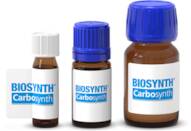
α-Angelica lactone
CAS : 591-12-8
Ref. 3D-FA106390
| 10g | À demander | ||
| 25g | À demander | ||
| 50g | À demander | ||
| 100g | À demander | ||
| 250g | À demander |
Informations sur le produit
- 2(3H)-Furanone, 5-methyl-
- 2,3-Dihydro-5-methylfuran-2-one
- 2-Oxo-5-methyl-2,3-dihydrofuran
- 3-Pentenoic acid, 4-hydroxy-, γ-lactone
- 4-Hydroxy-3-pentenoic acid gamma-lactone
- 4-Hydroxy-3-pentenoic acid γ-lactone
- 4-Hydroxypent-3-enoic acid lactone
- 5-Methyl-2(3H)-furanone
- 5-Methyl-2,3-dihydro-2-furanone
- 5-methylfuran-2(3H)-one
- Voir d'autres synonymes
- Angelicalactone
- NSC 654
- Pent-3-en-4-olide
- alpha-Angelicalactone
- Δ<sup>2</sup>-Angelica lactone
- α-Angelicalactone
- β,γ-Angelica lactone
- γ-Angelica lactone
a-Angelica lactone is a compound that is used in the synthesis of various drugs. It is an asymmetric synthesis for the production of many biologically important compounds, including levulinate or amide. The reaction mechanism involves the formation of a lactone by dehydration of an alcohol and subsequent addition of an acid. This process can be described by:
RCOH + HO → RCOOH + H
RCOOH + H → RCOOH + 2 H
RCOOH → RCOOH + R'CO2R"
where R represents the alcohol and R' and R" represent the acid. The product is then hydrolyzed to produce the desired amide or lactone with water. Chemical reactions are catalyzed by enzymes, which are proteins that increase rates of chemical reactions without being consumed in them. Rat liver microsomes have been shown to have higher levels of enzyme activity than other mammalian liver microsomes, making it a good model
Propriétés chimiques
Question d’ordre technique sur : 3D-FA106390 α-Angelica lactone
Si vous souhaitez demander un devis ou passer commande, veuillez plutôt ajouter les produits souhaités à votre panier, puis demander un devis ou passer commande à partir de votre panier. C'est une méthode plus rapide, plus économique, et vous pourrez bénéficier des remises disponibles ainsi que d'autres avantages





